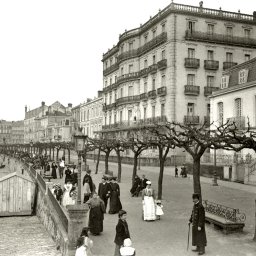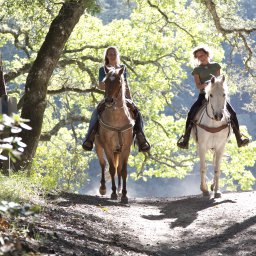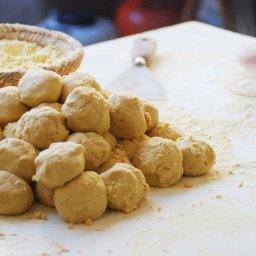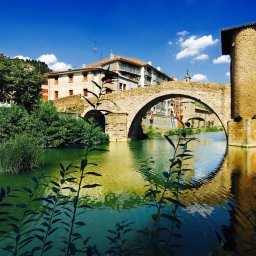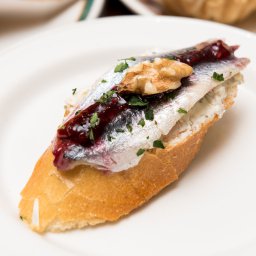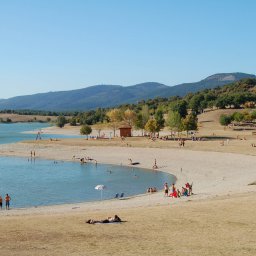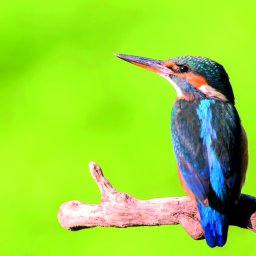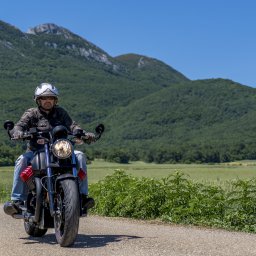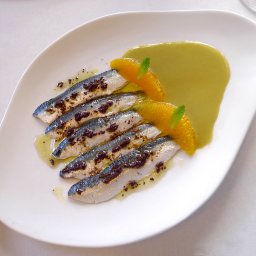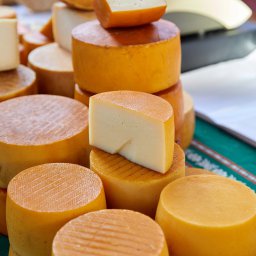At the end of March, the Basque fishing fleet anxiously awaits the arrival of shoals of anchovies in the Bay of Biscay. Although the inshore fleet are after the highly-prized anchovy, they also catch sardines and horse mackerel in their purse seines. By the end of June, shoals of albacore tuna invade the Bay of Biscay, tempted by the hooks and lures of Basque fishermen. Anchovies and albacore tuna are two mainstays of the fishing fleet and artisanal canneries, and popular staples of Basque cuisine. Enjoy them if you can.
Artisanal inshore fishing has been practised for centuries off the Basque coast, in rowing boats and sailboats rigged with triangular lateen sails or more sophisticated sail arrangements. Steam and diesel-powered vessels came later. Fishing has defined both the way of life and the rich gastronomy of the Basques. In towns like Hondarribi, Pasaia, San Sebastian, Orio, Getaria, Zumaia, Mutriku, Ondarroa, Lekeitio, Elantxobe, Mundaka, Bermeo, Armintza, Santurtzi and Zierbena, the locals keenly follow the movements of certain fish species throughout the year.
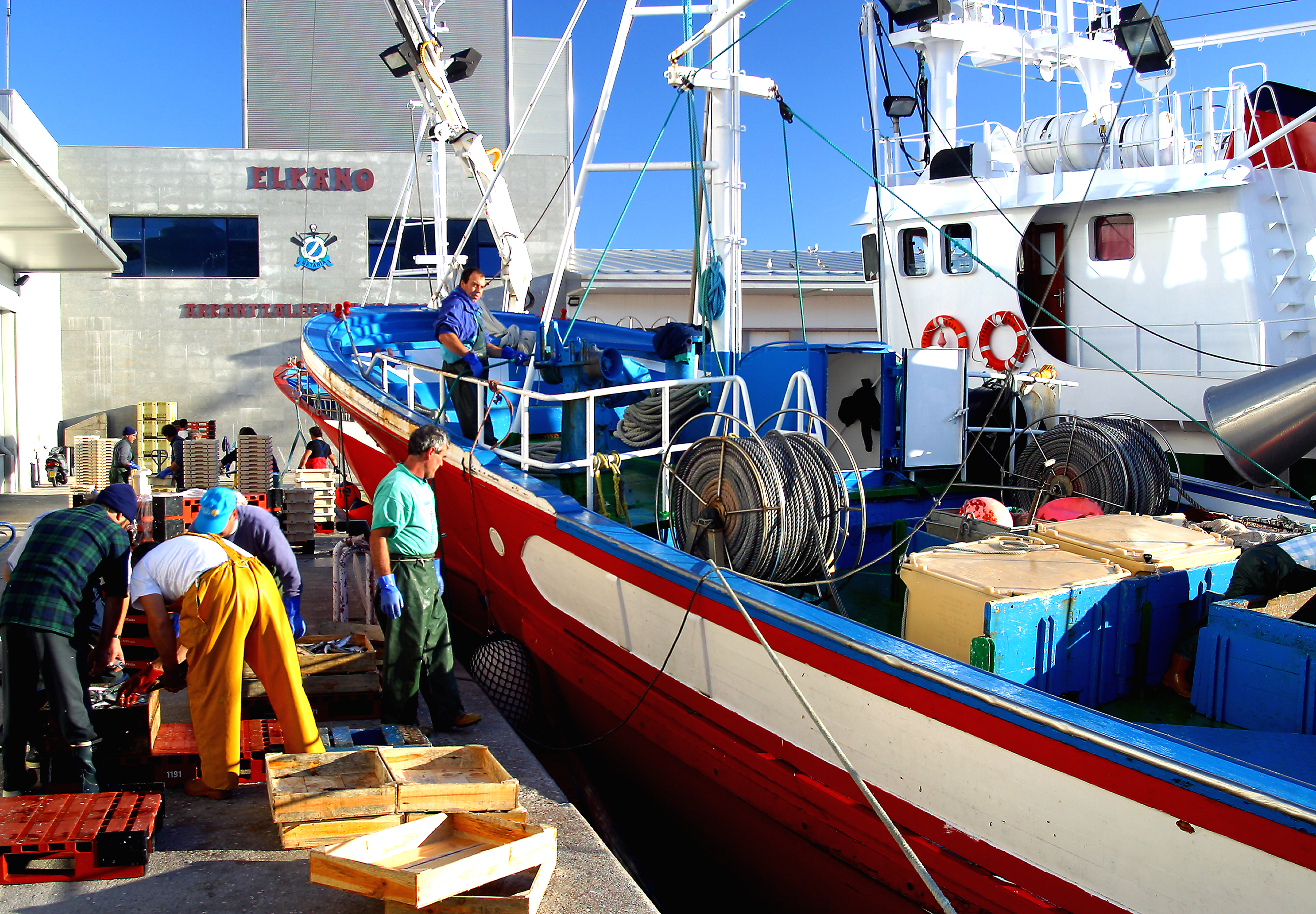
The coastal fishing of anchovies in the Bay of Biscay takes place from March to June. The fish are usually small –around 15 centimetres long– and while the colour may vary from light grey to dark blue, they usually have a silver streak along the flank. They swim in dense shoals, rising to the surface at night from the semi deep to feed on plankton and smaller fish.
Basque fishermen normally use artisanal methods and purse seines to catch anchovies. In times gone by, they used to locate the shoals of anchovies by observing the activity of nearby seabirds and dolphins. Nowadays, however, they rely on modern technology. Fresh anchovies are traditionally pan-fried whole, in sizzling, hot olive oil, sometimes with a little garlic and cayenne. They are often fried in batter too. They can also be marinated in vinegar or lemon juice. Most Basques tend to keep abreast of the fluctuations in the market price of anchovies.
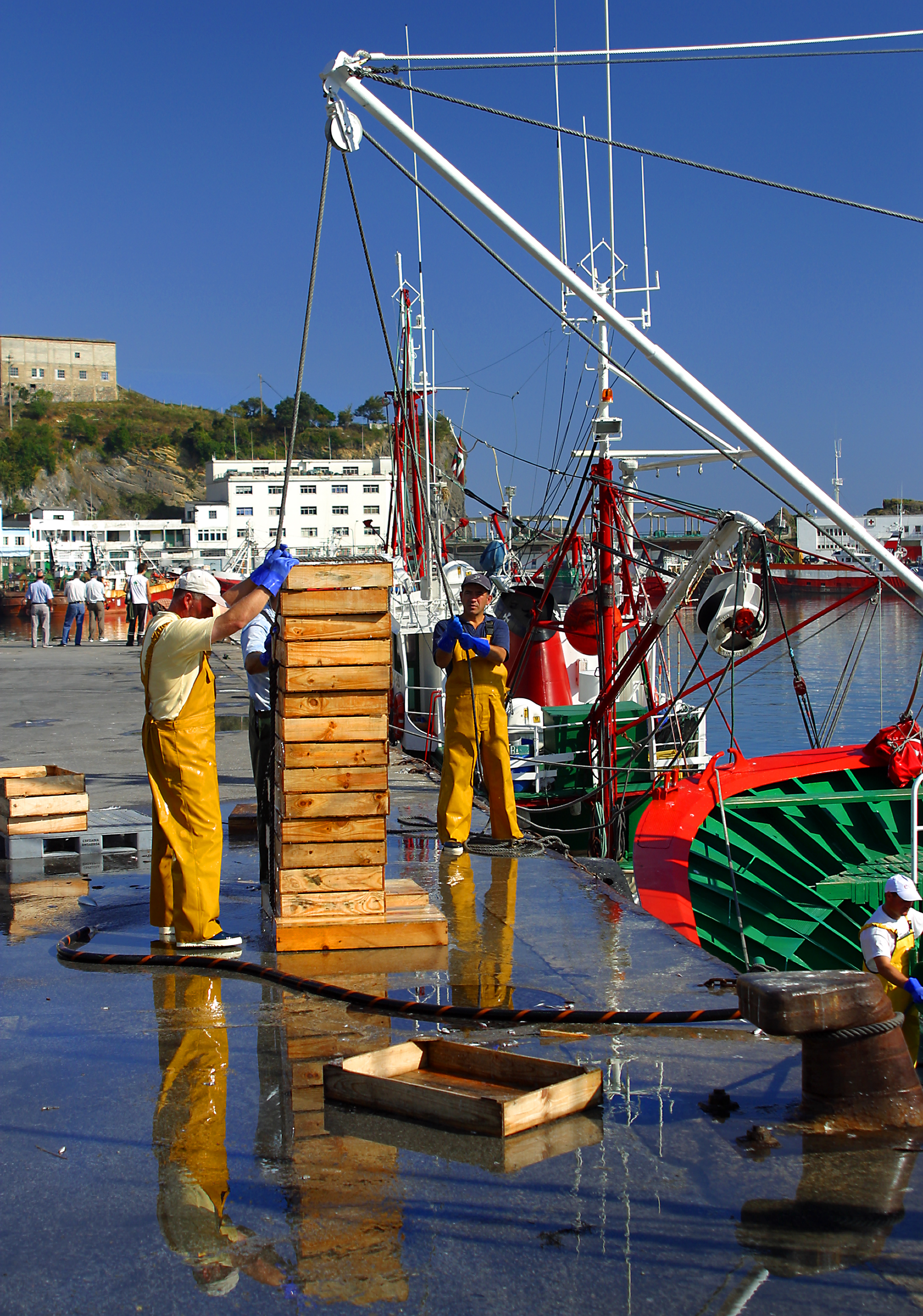
The second most important species fished artisanally by the Basque fleet is albacore tuna or “bonito del norte”. It is fished in the Capbreton canyon from June to October mostly using live bait, but sometimes by trolling lures. Fishing for albacore tuna is also very popular with amateur fishermen although the quota for recreational fishing vessels is very restrictive. Reeling in a fine specimen is very exhausting but always exciting.
Albacore tuna can measure up to 140 centimetres in length and weigh up to 60 kilos. The albacore differs from bluefin tuna in that they have larger pectoral fins and dark diagonal stripes on both sides of the dorsal area. An oily fish with a firm texture and strong flavour, the albacore tuna winters in waters near the Azores and migrates to the Bay of Biscay in May.
Restaurant grills throughout the Basque country –often right next to the fishing port– offer chargrilled tuna steak and belly on the menu. Another regular fixture is ‘marmitako’, a tuna stew made with peppers, potatoes and other vegetables.
Let yourself be tempted by some anchovies or albacore tuna. You won’t be sorry.




